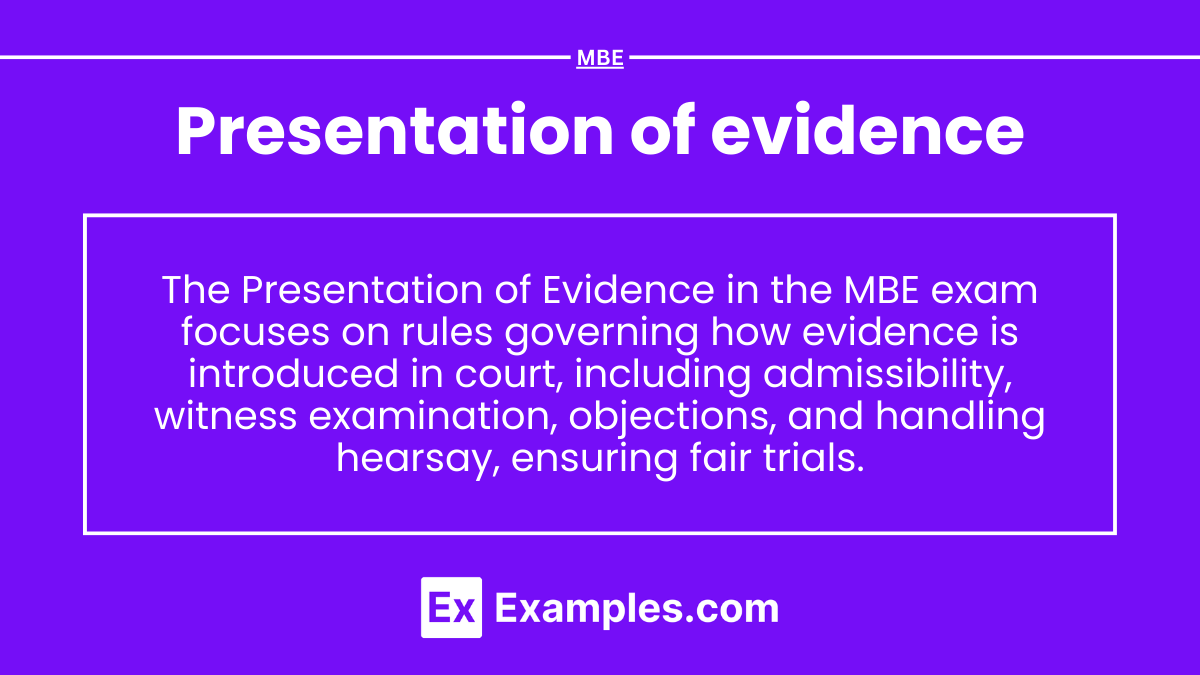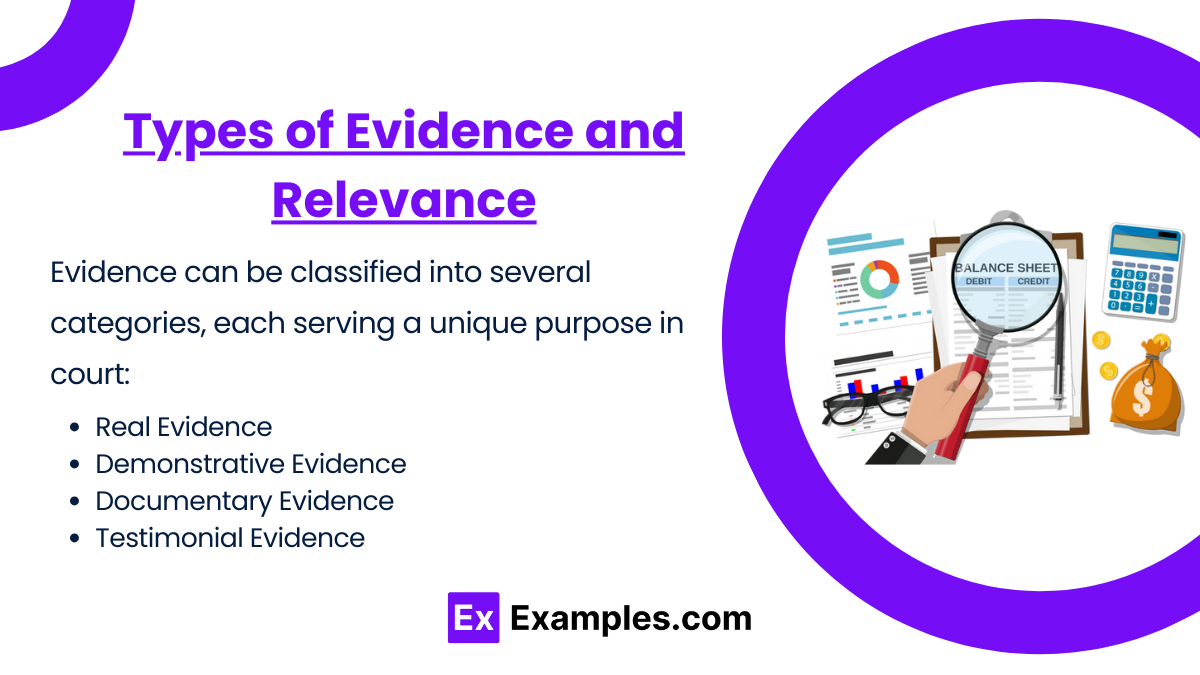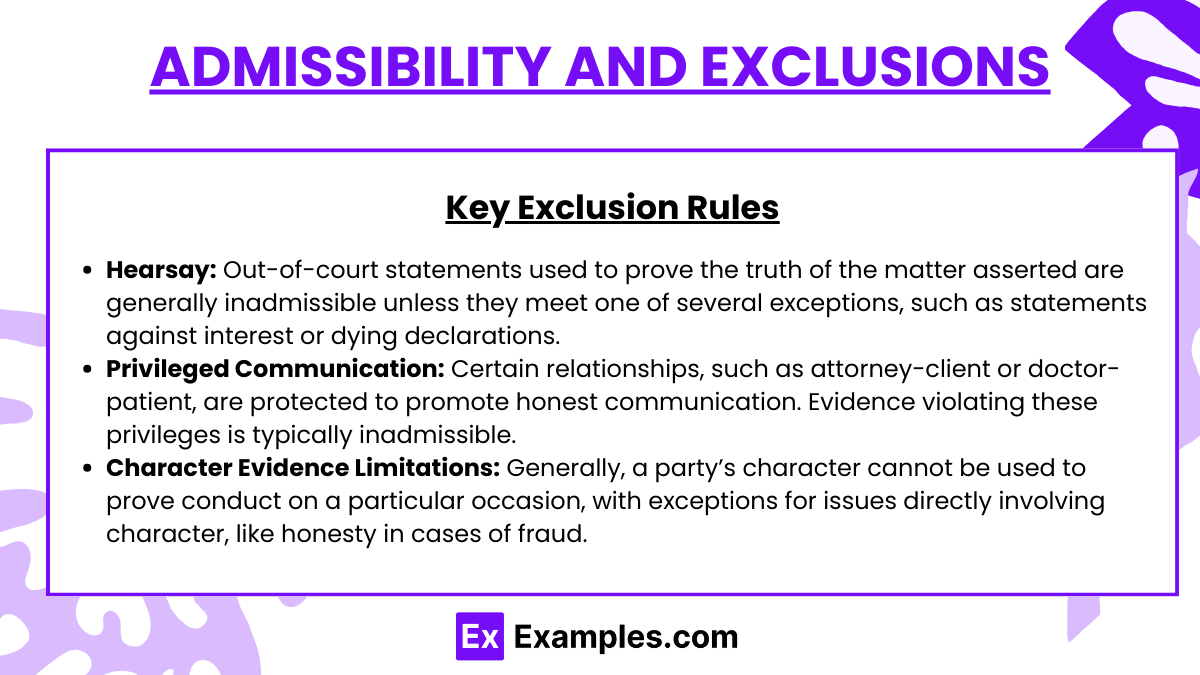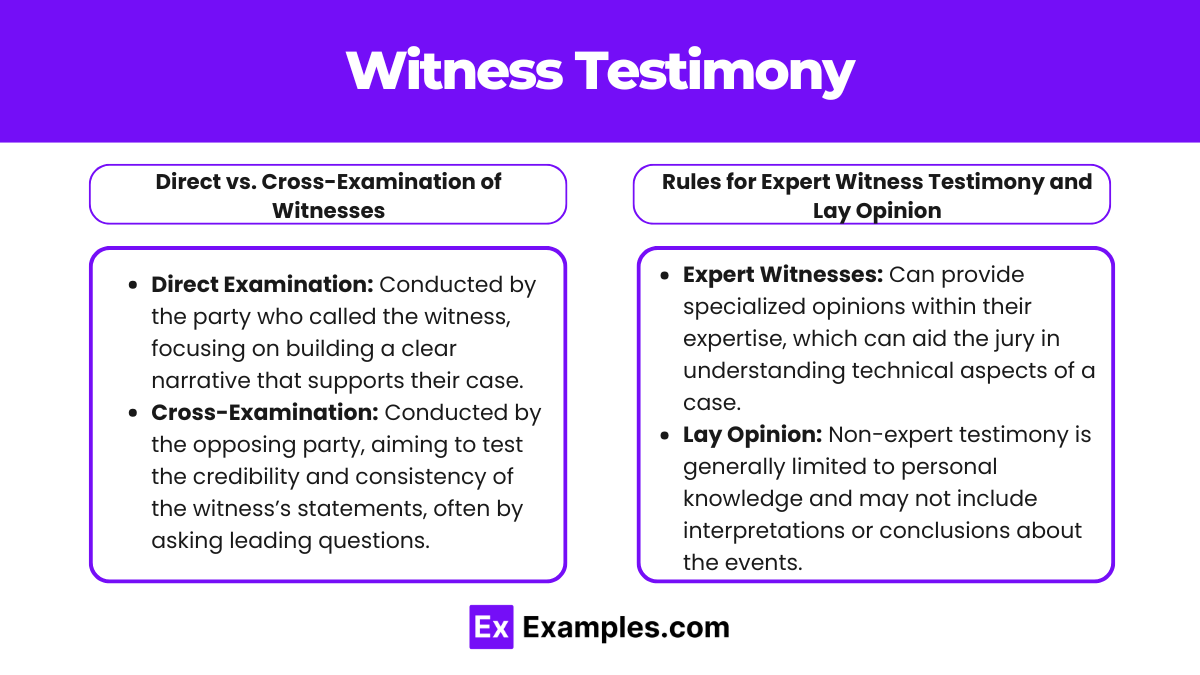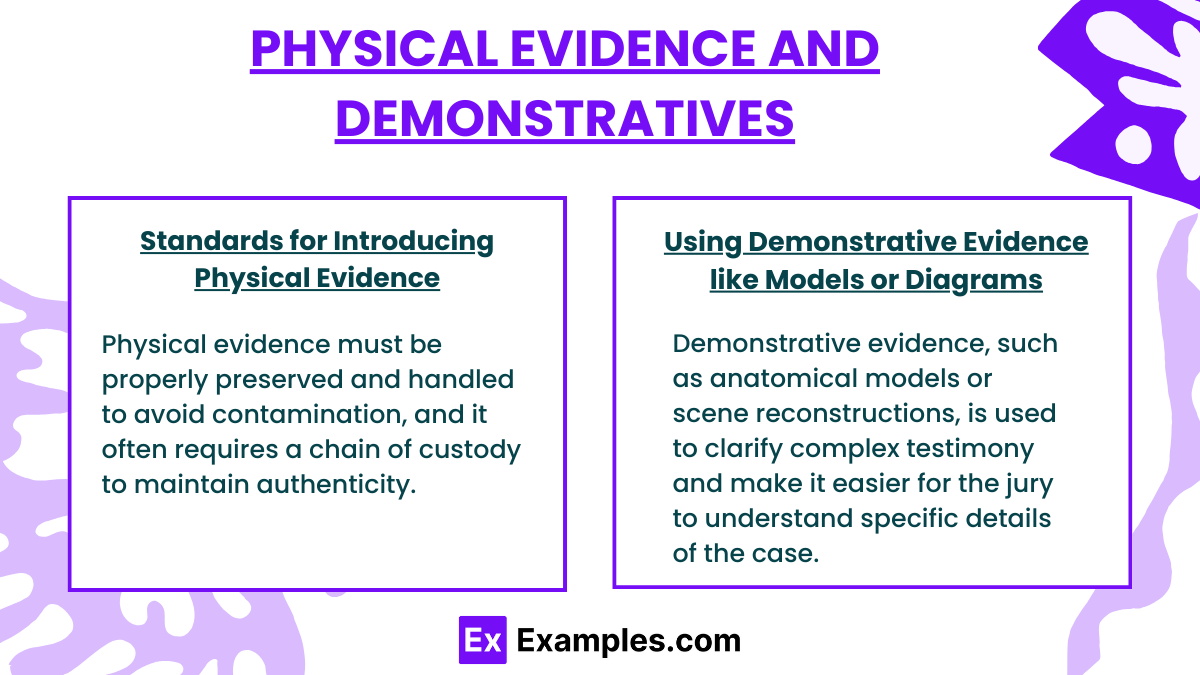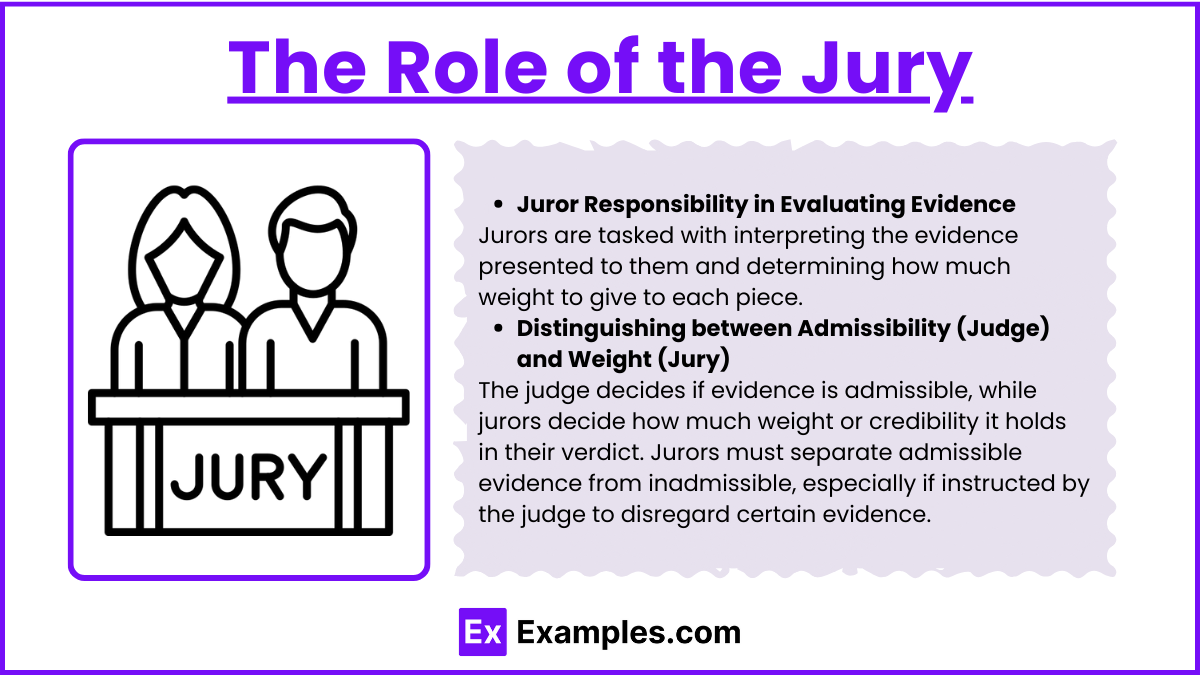In the MBE exam, mastering the "Presentation of Evidence" topic is essential for understanding the proper methods and legal foundations for introducing evidence in court. Key aspects include examining witness testimony, documents, and exhibits. This knowledge is crucial for applying the rules of evidence in civil and criminal trials, essential for achieving a high MBE score.
Learning Objectives
Study the "Presentation of Evidence" for the MBE by focusing on the rules and limitations of introducing evidence in court proceedings. Understand the importance of establishing a proper foundation, ensuring relevance, and securing admissibility. Examine the roles that direct and cross-examinations play in presenting witness testimonies. Evaluate the principles that govern the handling of documentary and physical evidence and familiarize yourself with the exceptions and exclusions that apply. Additionally, analyze how to authenticate evidence, and comprehend the roles of judges and juries in determining admissibility. Apply this knowledge in courtroom settings to interpret evidence-based questions and enhance your performance on MBE practice questions.
Types of Evidence and Relevance
Definition and Distinctions between Evidence Types
Evidence can be classified into several categories, each serving a unique purpose in court:Real Evidence: Physical objects presented to the jury, such as a weapon or a piece of clothing, which have direct involvement in the case.
Demonstrative Evidence: Visual aids, models, or diagrams used to help illustrate witness testimony or explain complex ideas.
Documentary Evidence: Written or recorded evidence, such as contracts, letters, or videos, that support factual claims in court.
Testimonial Evidence: Oral statements made by witnesses under oath during trials, providing accounts of what they saw, heard, or experienced.
Admissibility and Exclusions
Criteria for Admissibility: Competence, Relevance, Materiality
To be admitted, evidence must be:Competent: The evidence must come from a qualified source, and the witness or document must be legally capable of providing information.
Relevant and Material: Evidence must directly relate to and significantly impact the case.
Key Exclusion Rules
Hearsay: Out-of-court statements used to prove the truth of the matter asserted are generally inadmissible unless they meet one of several exceptions, such as statements against interest or dying declarations.
Privileged Communication: Certain relationships, such as attorney-client or doctor-patient, are protected to promote honest communication. Evidence violating these privileges is typically inadmissible.
Character Evidence Limitations: Generally, a party’s character cannot be used to prove conduct on a particular occasion, with exceptions for issues directly involving character, like honesty in cases of fraud.
Witness Testimony
Direct vs. Cross-Examination of Witnesses
Direct Examination: Conducted by the party who called the witness, focusing on building a clear narrative that supports their case.
Cross-Examination: Conducted by the opposing party, aiming to test the credibility and consistency of the witness’s statements, often by asking leading questions.
Rules for Expert Witness Testimony and Lay Opinion
Expert Witnesses: Can provide specialized opinions within their expertise, which can aid the jury in understanding technical aspects of a case.
Lay Opinion: Non-expert testimony is generally limited to personal knowledge and may not include interpretations or conclusions about the events.
Physical Evidence and Demonstratives
Standards for Introducing Physical Evidence
Physical evidence must be properly preserved and handled to avoid contamination, and it often requires a chain of custody to maintain authenticity.Using Demonstrative Evidence like Models or Diagrams
Demonstrative evidence, such as anatomical models or scene reconstructions, is used to clarify complex testimony and make it easier for the jury to understand specific details of the case.
The Role of the Jury
Juror Responsibility in Evaluating Evidence
Jurors are tasked with interpreting the evidence presented to them and determining how much weight to give to each piece.Distinguishing between Admissibility (Judge) and Weight (Jury)
The judge decides if evidence is admissible, while jurors decide how much weight or credibility it holds in their verdict. Jurors must separate admissible evidence from inadmissible, especially if instructed by the judge to disregard certain evidence.
Examples
Example 1
Presenting a document in court and establishing its authenticity through witness verification.
Example 2
Introduction of physical evidence, such as a weapon, and laying foundation through chain of custody.
Example 3
Using demonstrative evidence, like diagrams, to clarify complex witness testimony in a personal injury case.
Example 4
Objecting to a piece of hearsay evidence and explaining the rationale for exclusion based on the hearsay rule.
Example 5
Cross-examining a witness to challenge their credibility and the reliability of their testimony.
Practice Questions
Question 1
During a trial, an attorney wants to introduce a letter written by a deceased person. The opposing attorney objects, claiming it is hearsay. Which of the following would be the best argument for admitting the letter as evidence?
(A) The letter is relevant to the case.
(B) The letter is authentic and contains factual information.
(C) The letter falls under the hearsay exception for statements against interest.
(D) The deceased person was known to be honest.
Answer
(C) The letter falls under the hearsay exception for statements against interest.
Explanation
Statements against interest are an exception to hearsay rules when the declarant is unavailable. Here, because the writer is deceased, their statement may be admissible if it was against their own interest at the time.
Question 2
A defense attorney cross-examines a witness on a past criminal conviction to discredit their credibility. Under what circumstances is this allowed?
(A) Always, as it pertains to the witness's character.
(B) Only if the crime involved dishonesty or a false statement.
(C) Only if the witness agrees to discuss it.
(D) Never, as it violates character evidence rules.
Answer
(B) Only if the crime involved dishonesty or a false statement.
Explanation
Crimes involving dishonesty or false statements may be admissible for impeaching a witness’s credibility under the Federal Rules of Evidence.
Question 3
What is required to introduce a piece of documentary evidence in court?
(A) The document must be relevant and reliable.
(B) The document must be self-authenticating.
(C) An original must be provided, unless an exception applies.
(D) The judge must find it persuasive.
Answer
(C) An original must be provided, unless an exception applies.
Explanation
The best evidence rule generally requires the original document to be provided when its contents are in dispute unless there is a valid exception, such as if the original is lost.

